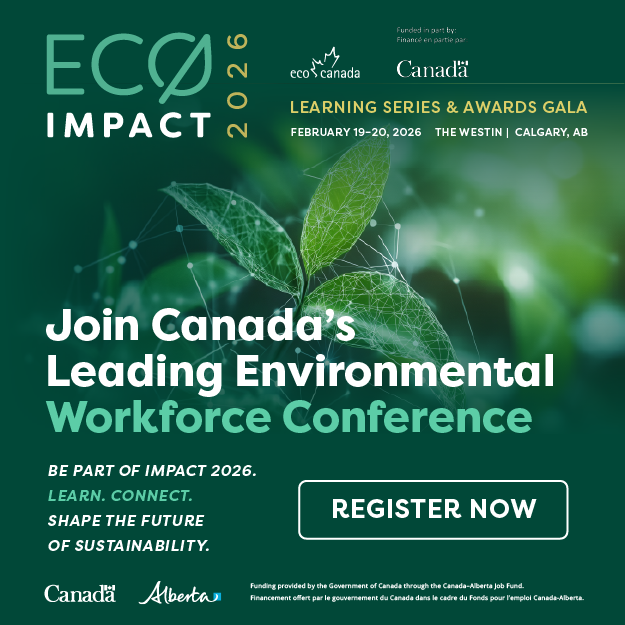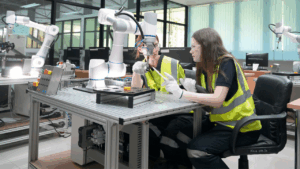Are you looking to find a new job in the environmental sector and start a new green career? As recognition of the importance of sustainability and environmental work grows, so too does the number of people looking to join the environmental sector. That’s great news!
However, making the decision to work in the environmental sector and actually finding work within the sector isn’t always easy. Perhaps you’ve worked in a different sector for many years and have little to no experience with the environmental sector. Maybe you’ve worked in the environmental sector previously, but that industry is now seeing a decline in jobs. Or, perhaps you’re just getting started and don’t know where to find work experience.
The good news is that environmental jobs are on the rise. According to our latest research, the environmental sector will see 173,000 net environmental job openings by 2025 as a result of both sector growth and retirement demand. In addition, as the environmental sector grows and changes, so too will the types of jobs in demand. And, while some industries will see a decline in jobs, others will see an increase.
If you’re looking to make a career transition here’s some advice on how to go about it and find your ideal green career.
How to transition into the environmental sector – breaking the barriers
Though there is an increasing number of jobs available within the environmental sector, securing the role you want isn’t always easy. This is especially true if you’re new to the sector or moving from one industry to another. We’ve identified the top three barriers to making a green transition and included our top tips for overcoming them.
Barrier 1: No specific environmental education
While specific environmental education is not required for every role within the environmental sector, many jobs do require specific higher education programs. You can browse our career profiles to get an idea of the typical education requirements different roles.
If the career you’re hoping to have does require specific environmental education or a degree you don’t yet have, there are options available to you.
We offer several online courses, such as Navigating Environmental Law, that can be added to your resume to show knowledge in those areas. In addition, if you determine you need an environmental degree, take a look at ECO Canada accredited programs found across Canada. Taking an accredited program gives you access to EPt Student and unlocks additional resources to help you break into the sector. Our programs with Royal Roads Unviersity give you flexibility to work alongside your study which can help with funding too. For more information take a look at our ‘Funding Your Future‘ post.
Barrier 2: No (or little) previous work experience within the environmental sector
Perhaps you have the relevant educational and training, but lack experience within the environmental sector and that’s making it harder to find a job. If this is the case for you, the following tips can help.
Check your eligibility for funded internships
Young professionals and students can get pre-approved for internship funding. This means that employers can receive wage subsidies to help with their hiring and training costs which can make your resume stand out from the rest.
Securing an internship through our employment programs gives you great, paid work experience and networking opportunities that are sure to help kickstart your environmental career.
Volunteer with local organizations
Volunteering with local environmental organizations shows you’re passionate about working in the sector. You can also learn valuable skills that are used by environmental workers and it’s a great way to network and find out about upcoming opportunities.
Find a mentor
Finding a mentor is a great way to get advice from someone who has been in your position before. They can offer advice on how to gain more experience, develop your skills and introduce you to others in the sector.
As an EPt you get access to mentorship with experts in the sector. Learn more about our environmental designation.
Barrier 3: Difficulty showing previous experience is relevant
Perhaps you already have experience and education in the environmental sector but you’re looking to transition from one industry to another. Sometimes this can be tricky as you might not have experience that applies to the new industry you’re looking to move to.
In this instance try and identify the transferrable skills you’ve developed through previous experience and show how they apply to the skills and experience your prospective employer is looking for. To help you get started, take a look at our factsheet about transferring from being an oil & gas well drilling worker to a wastewater collection operator. Environmental employers look for strong soft skills such as communication so showing you have these skills is highly valuable.
Stories from those who’ve been there
For J.P. Brown, the most difficult aspect of transitioning into the environmental sector was “getting a sense of the current industry situation and vocabulary.”
The newly employed carbon analyst transitioned from musical services into the environment industry by enrolling in environmental management, but not without challenges along the way.
“My gap in knowledge was enormous. You may not believe this, but when I first showed up to class, I had never heard the word sustainability before.”
Brown overcame these hurdles by finding a niche. “For me, it was writing. That’s the great thing about the environmental sector—the number of choices available is constantly growing.”
As he discovered, breaking into a new sector can be daunting. A successful job transition is similar to a trip into the wilderness—preparation is required before embarking.
Overcoming the barriers
For Dr. Kanwaljit Kaur, at a senior level, and Melanie Fincaryk, a newly enrolled student, both found difficulties when looking to transition into the environmental sector.
Dr. Kaur, whose background is in environmental science, transitioned not from one sector to another, but to a new sub-sector within the industry. At the same time, she also moved from India to Canada.
“For 15 years I worked as a researcher, regulator, and consultant. In the last eight years I made a choice to work as a trainer and educationist,” she says. “Getting to know the work scenario, the environmental regulations of the region, and becoming certified as an EPt were just the beginning.” To get to where she needed to go, Dr. Kaur updated her knowledge and made sure she was able to present environmental information in a different way, to a new audience.
Fincaryk, originally an architectural technologist, decided to go back to school to pursue a degree in forestry. “I thought about transitioning for a long time, but didn’t act on it because of money and the risk of having to take on a new life from square one,” she says. Ultimately, Fincaryk was drawn to becoming an advocate for the conservation and preservation of Canadian forests, so she moved from Calgary to Fredericton to follow this new career path.
Strategies for success
Each of these environmental professionals has developed a strategy that will help them find meaningful employment in the environmental sector. Brown’s key to success has been to network with as many people as possible.
“Attend networking events and seminars. Workshops, such as those provided by ECO Canada are some of the best places to go because they give you the opportunity to meet people in a wide variety of environmental careers.”
Dr. Kaur advises professionals to equip themselves with the right information and training. “Being new to the area, you may not be easily accepted as a professional, but persistence and acquiring local knowledge pays off.”
Fincaryk believes that “no one is ever too old for school or change—it’s a matter of finding what fits your needs and going for it.”





